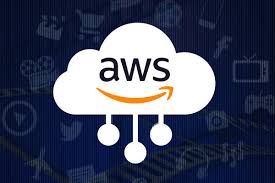Introduction to AWS
What is AWS?
Briefly introduce Amazon Web Services (AWS) as a comprehensive cloud computing platform.
Explain how AWS provides on-demand cloud services such as computing power, storage, and databases.
Why Learn AWS?
Talk about the increasing demand for cloud professionals and the role of AWS in modern IT infrastructure.
Mention key benefits like scalability, flexibility, and cost-efficiency.
Overview of AWS Course Options
Different Types of AWS Courses
AWS offers a variety of training options, ranging from beginner to advanced levels. These include:
Foundational Courses: For beginners who are just starting with cloud computing (e.g., AWS Cloud Practitioner Essentials).
Associate Level Courses: For individuals with some technical experience (e.g., Solutions Architect – Associate).
Professional Level Courses: For experienced professionals looking for in-depth knowledge (e.g., Solutions Architect – Professional).
Specialty Courses: Focused on specific areas such as machine learning, security, and big data (e.g., AWS Certified Security – Specialty).
Certifications
Mention the AWS certification paths and how they can boost career opportunities.
Examples: AWS Certified Solutions Architect – Associate, AWS Certified Developer – Associate.
Why AWS Training is Important
Industry Demand for AWS Professionals
Highlight how AWS skills are highly sought after by companies transitioning to cloud technologies.
Career Growth Opportunities
Explain how AWS certification can help increase earning potential and open doors to various job roles such as Cloud Architect, Cloud Developer, or Cloud Engineer.
Hands-on Learning
Discuss the importance of hands-on experience in AWS courses (practical labs, exercises, and projects).
AWS Training Resources
AWS Training and Certification Portal
Explain AWS’s official learning platform where students can access free and paid courses.
AWS Free Tier
Mention the AWS Free Tier, which allows learners to experiment with AWS services at no cost.
Third-Party Platforms
Highlight platforms like Coursera, Udemy, and LinkedIn Learning that offer AWS courses.
Books and Blogs
Recommend helpful books (e.g., “AWS Certified Solutions Architect Official Study Guide”) and blogs that provide tutorials and insights.
Conclusion:
Summing Up the Value of AWS Courses
Encourage readers to start with beginner-level courses and progress through certifications to build a strong AWS foundation.
Call to Action:
Invite readers to explore AWS learning resources and certifications. You can link to the official AWS Training and Certification page or recommend starting with a specific course based on their needs.
Additional Tips for Writing Your Blog:
Use Simple Language: Avoid jargon or overly technical terms unless you define them for beginners.
Include Personal Experiences or Success Stories: If you or someone you know has taken an AWS course and seen career benefits, sharing that can inspire readers.
Add Visuals: Diagrams, screenshots of AWS tools, or infographics summarizing course paths can make the blog more engaging.
Provide Links to Resources: Add links to AWS’s official certification guide, popular courses, or free resources (like AWS Cloud Practitioner Essentials) to help readers get started immediately.




